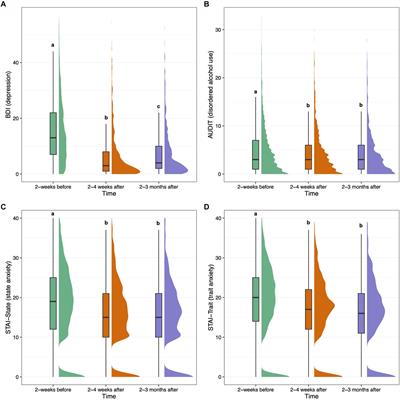84
IntroductionThe classic psychedelic psilocybin, found in some mushroom species, has received renewed interest in clinical research, showing potential mental health benefits in preliminary trials. Naturalistic use of psilocybin outside of research settings has increased in recent years, though data on the public health impact of such use remain limited.MethodsThis prospective, longitudinal study comprised six sequential automated web-based surveys that collected data from adults planning to take psilocybin outside clinical research: at time of consent, 2 weeks before, the day before, 1–3 days after, 2–4 weeks after, and 2–3 months after psilocybin use.ResultsA sample of 2,833 respondents completed all baseline assessments approximately 2 weeks before psilocybin use, 1,182 completed the 2–4 week post-use survey, and 657 completed the final follow-up survey 2–3 months after psilocybin use. Participants were primarily college-educated White men residing in the United States with a prior history of psychedelic use; mean age = 40 years. Participants primarily used dried psilocybin mushrooms (mean dose = 3.1 grams) for “self-exploration” purposes. Prospective longitudinal data collected before and after a planned psilocybin experience on average showed persisting reductions in anxiety, depression, and alcohol misuse, increased cognitive flexibility, emotion regulation, spiritual wellbeing, and extraversion, and reduced neuroticism and burnout after psilocybin use. However, a mino...



What does “naturalistic” mean in this context? Couldn’t see it defined, though it’s used throughout the bits I read.
I also couldn’t find a concrete definition in the article, but judging from its use, I would assume it’s describing regular use outside of controlled clinical settings.
Cool thank you!
Probably the normal definition, which means eating mushrooms, not extracting the chemical, concentrating it, measuring the purity, and dosing it out.
But yeah, would be good to be clear.
Other user suggested ‘not consumed in a clinical setting’ as well, which is an important distinction.
Thanks for the insight!